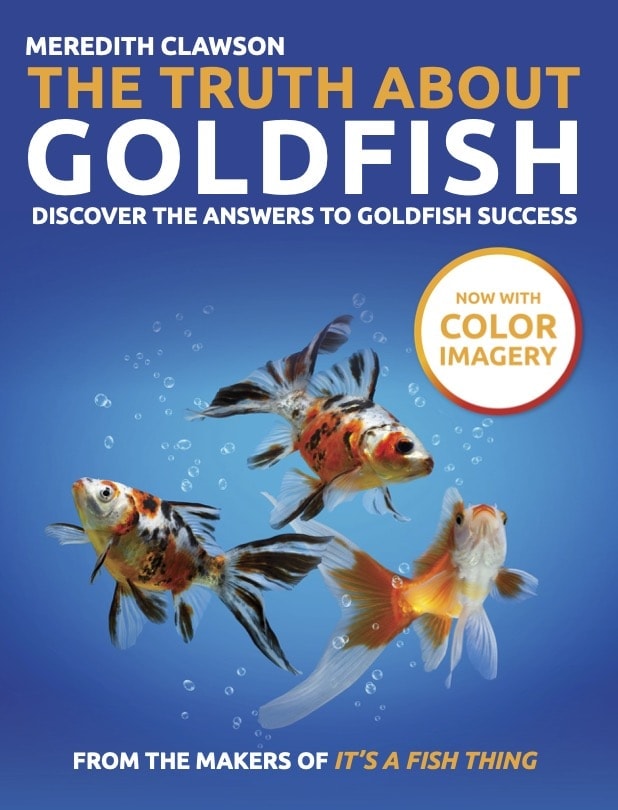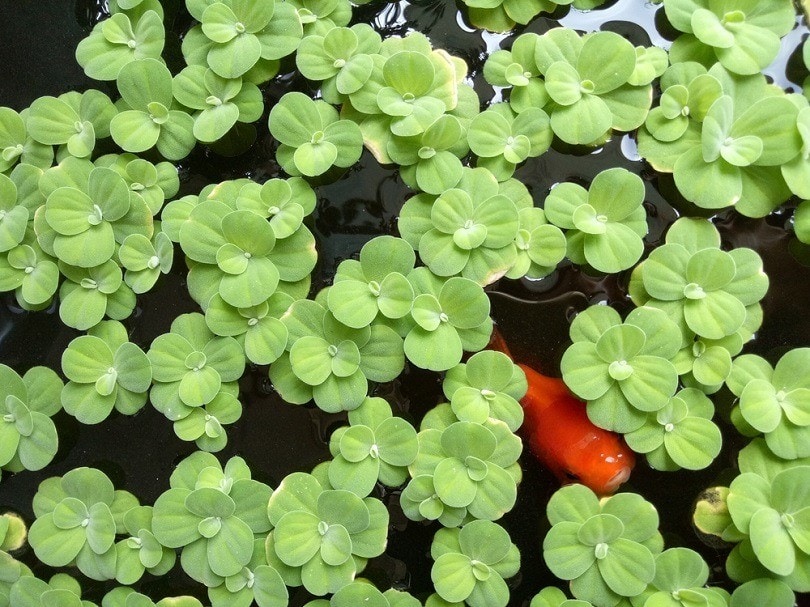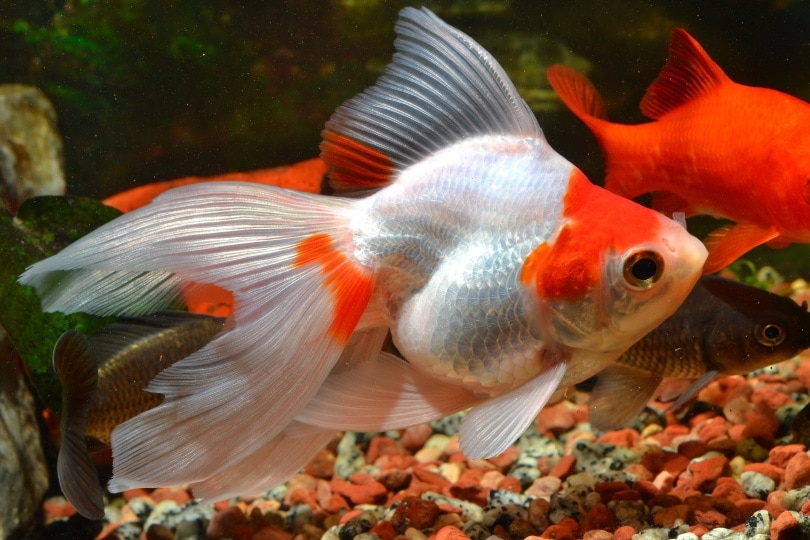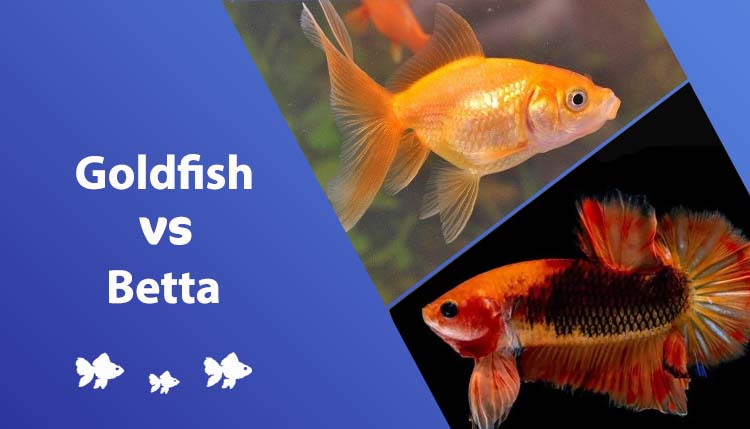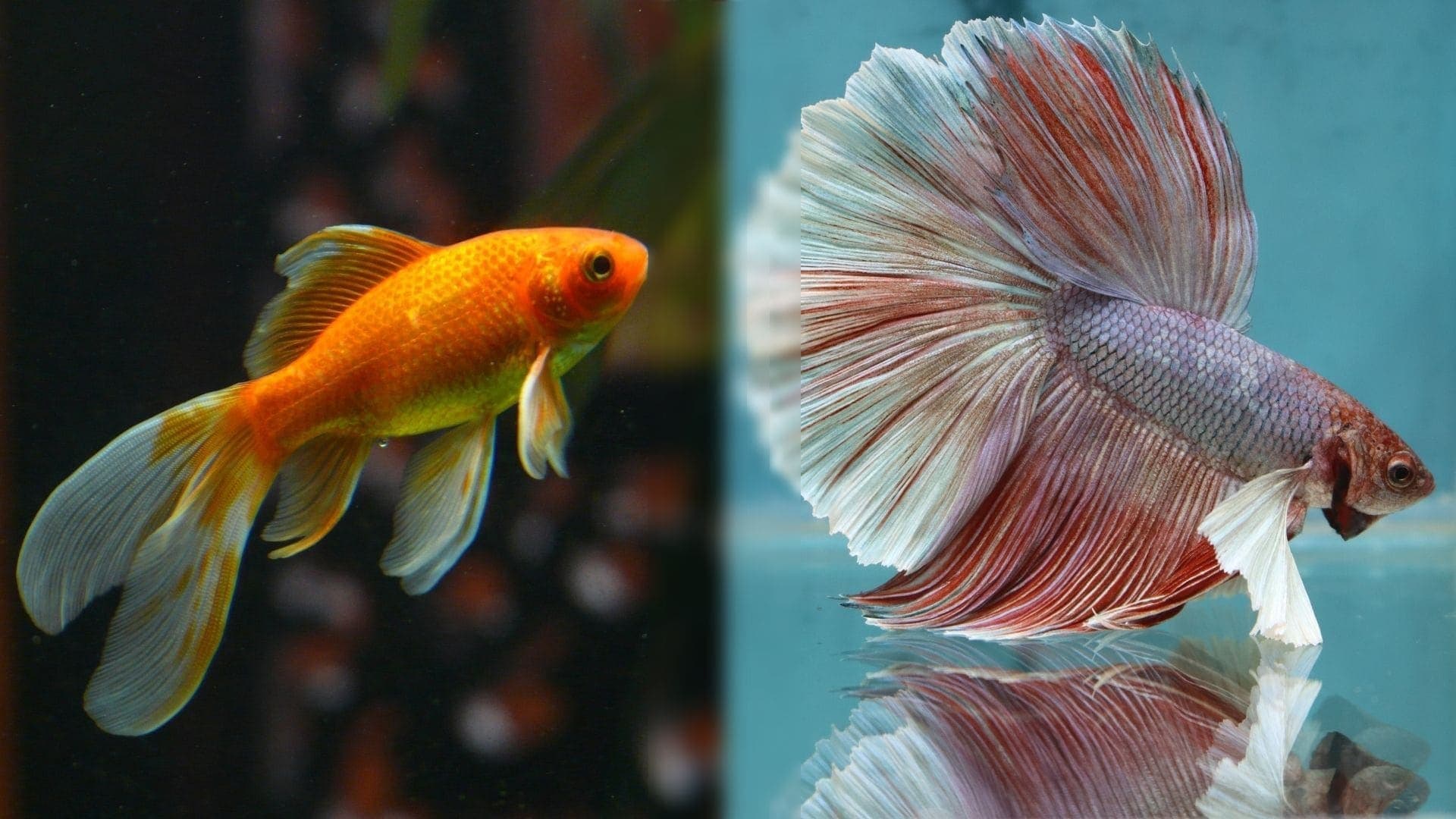Celestial Eye Goldfish: Pictures, Size, Care, Tank Setup, & More

Updated on
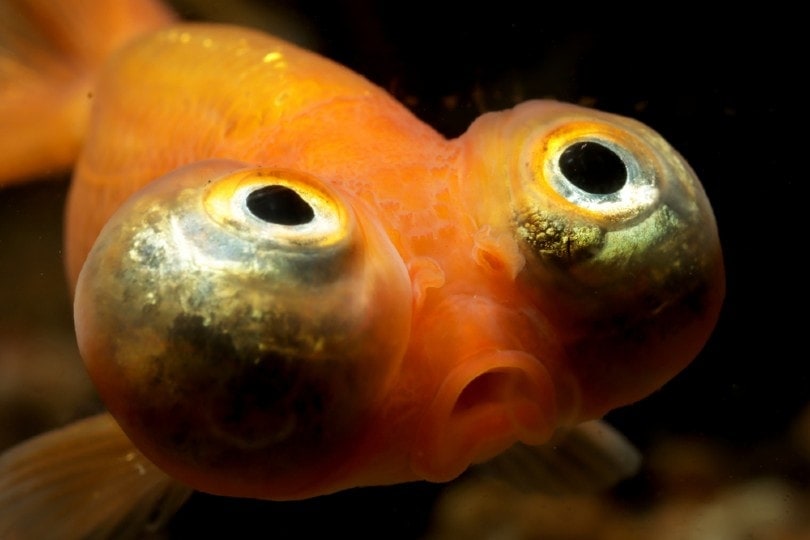
Click to Skip Ahead
Celestial Eye Goldfish Overview
| Size: | Up to 5 inches long |
| Lifespan: | 8 – 12 years |
| Similar Breeds: | Bubble eye goldfish |
| Suitable for: | Experienced fish owners |
| Temperament: | Awkward, slow, accident-prone |
The main discerning feature of the celestial eye goldfish is its upward-staring eyes, which give it its name because its eyes are always pointed at the sky. As well as giving it an odd look, the eye position and prominence of the retinas mean that the celestial eye goldfish suffers from retinal degeneration. The species also lacks a dorsal fin, which is used by animals that swim for stability and to prevent rolling over.
This combination makes the celestial eye goldfish prone to accidents and inhibits a normal life. As such, there are some calls for owners to avoid keeping and breeding this species of goldfish.
Celestial Eye Goldfish Breed Characteristics
Celestial Eye Goldfish Cost

The celestial eye goldfish is a fancy goldfish and is not usually readily available in general pet stores. However, it is popular enough with prospective owners that it can be found in specialist fish stores and from certain breeders. Although it does cost more than a standard goldfish, you should still be able to buy one for between $10 and $20.
However, there are questions about whether the celestial eye goldfish should be bred in the first place. Every celestial eye goldfish is born with retinal degeneration and most will go blind over their lives. They are also born without a dorsal fin, which means they struggle for balance and can find it difficult to swim in some tanks.
Sociability of the Celestial Eye Goldfish
The celestial eye goldfish is not recommended for novice owners and cannot be kept with other species of fish because they will miss out on food and may be bullied by certain species.
Do These Fish Make Good Pets?
Best for experienced keepers, celestial eye goldfish do not necessarily make the best pet fish. They take a lot of care, cannot be kept with other species, and have specific tank and water requirements that need to be met to keep them safe and healthy.
Does This Fish Make a Good Tank Mate?
Although several celestial eye goldfish can be kept together safely in a single tank, it is not recommended that these fish be kept with other species. Poor eyesight and mobility mean that other species will get to the food first and the celestial eye goldfish can be left frustrated and starving.
Care Guide & Tank Set Up

The smallest tank for a single celestial eye goldfish is a 10-gallon tank, but a 20-gallon one is preferred. And if you intend to keep more than one, you will need to add another 10 gallons to the preferred tank size for every additional fish. When compared to other goldfish species, you will have to make more provisions for the celestial eye because of its failing eyesight and lack of a dorsal fin.
Although decorations look pretty in a tank, you need to keep them to a minimum with celestial eye goldfish, and those that you do have are best placed around the edge of the tank.
Water Quality, pH & Temperature
Unlike other types of fish, goldfish do not have stomachs, which means everything they eat passes through them. This means that the water in a goldfish tank gets really dirty, really quickly, and it needs frequent cleaning to keep the fish healthy.
As well as regular cleaning, you also need to ensure that the water is between 65°F and 72°F. The pH needs to be between 6.0 and 8.0 and nitrates should be fewer than 20 parts per million. You will need a filtration system because of the amount of dirt produced, but the lack of a dorsal fin and the associated lack of balance that the celestial eye goldfish has means that the water cannot have a current or it will cause the fish to lose its balance.
If you need help getting the water quality in your aquarium just right for your goldfish family, or just want to learn more on the subject (and more!), we recommend that you check out our best-selling book, The Truth About Goldfish.
It covers everything from water conditioners to nitrates/nitrites to tank maintenance and full access to our essential fishkeeping medicine cabinet!
Substrate
Avoid fine gravel and other fine substrate or your goldfish could hoover up the small pieces while rooting around for food that falls to the bottom of the tank. Larger gravel or even river rocks are a good option.
Plants
Plants are a great addition to a fish tank. They remove some of the harmful nitrates in the water and they also produce oxygen which is important for all fish, but especially for oxygen-hungry goldfish. However, you will need to choose robust plants to put in the tank because goldfish also like to feed on the plants. Choose plants like Anubias and java fern.
Lighting
Goldfish do not require any additional light but they do benefit from some natural light. Place the tank so that it gets indirect natural light but don’t place it directly in the sun. Celestial eye goldfish have very sensitive eyes, so you mustn’t overwhelm them with bright lights.
Filtration
Because goldfish produce a lot of waste and you need to provide clean water, you will need a decent filtration system, but the lack of a dorsal fin means that celestial eye goldfish do not do well in water with a strong current. Try to set the filter up so that the water flows into decorations or plants, therefore reducing the strength of the current in the rest of the tank.
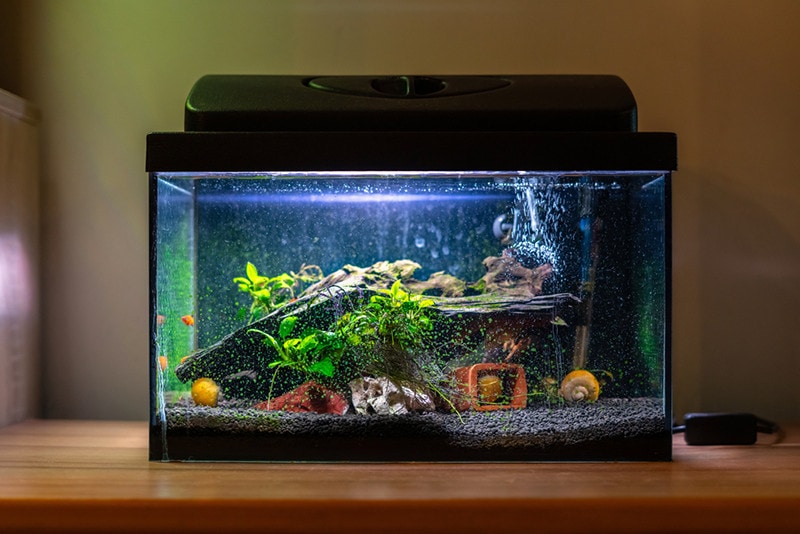
Things to Know When Owning a Celestial Eye Goldfish:
Celestial eye goldfish are quite challenging to care for because of their prominent eyes and their lack of dorsal fins. They are generally recommended for experienced owners, although novice owners that do a lot of research and commit to regular cleaning and care can do well with this species.
Food & Diet Requirements
Fancy goldfish are round-bodied and do have slightly different nutritional requirements to standard goldfish. Choose flakes or pellets specifically for fancy goldfish and follow the feeding guidelines on the packet or tub. You can also occasionally feed frozen vegetables and even brine shrimp as a treat. These extra foods will also help prevent swim bladder problems, which can cause fish to swim on their side or upside down. The problem is especially exaggerated in fish with no dorsal fins and it can prevent them from feeding.
Size & Growth Rate
Goldfish grow quickly within the first few months and then their growth rate slows down. Expect an adult of this species to reach approximately 5 inches.
Varieties
There are no known subspecies of celestial eye goldfish but they can come in a variety of different colors. The most common colors are orange, black, and calico.
Lifespan and Health Conditions
Despite problems with their vision and balance, as well as their susceptibility to several different diseases, the celestial eye goldfish can live 10 to 12 years, or potentially even longer if given optimal conditions and cared for properly.
All celestial eyes are born with retinal degeneration, although how quickly it progresses and the eventual severity of the condition depends on the individual fish. You will also need to ensure that the protruding eyes do not suffer injuries as a result of being poked or snagged.
- Ich
- Bacterial Infections
- Flukes
- Cloudy Eye
Male vs. Female
Female goldfish tend to be wider, longer, and have deeper chests than males, while males are more likely to be territorial, although it is very rare in celestial eye goldfish.
3 Little-Known Facts About Celestial Eye Goldfish
1. Their Protruding Eyes Can Cause Health Problems
Their eyes are their most unique feature, being found on the top of their heads and permanently staring upwards. All celestial eye goldfish are born with a degenerative disease that affects the retinas, which means that they are slowly going blind from the day their eyes start to develop. They are also prone to getting poked and prodded by plants and other decorations and ornaments.

2. They Are Not Proficient Swimmers
Another condition that is common to all celestial eye goldfish is that they do not have dorsal fins. Dorsal fins are the fins found on the backs of swimming fish. These are used for balance and to ensure that the fish remain upright. Because celestial eyes do not have these fins, they can struggle to stay upright and find it difficult to swim in moving water.
3. There Are Calls to Stop the Breeding and Buying of Celestial Eye Goldfish
Problems with the eyes and the lack of dorsal fins have led to some groups calling for breeders to stop breeding the species and to prevent the sale of them to prospective owners. There is currently no such ban, although the rules may change in the future.
Final Thoughts
Celestial eye goldfish are unique thanks to their eyes which are on the top of their head and always looking up to the sky. They also have no dorsal fin, and this combination means that the fancy goldfish is considered quite difficult to care for. They certainly have special tank requirements that mean you will need to arrange your tank filter to prevent the water from moving too quickly around the tank and to ensure that there is no danger of the fish getting poked or prodded in the eyes.
These requirements mean that the species is not recommended for novice owners, and some experienced keepers will steer clear of the Celestial Eyes because they are more difficult to manage.
Featured Image Credit: Dan Olsen, Shutterstock


